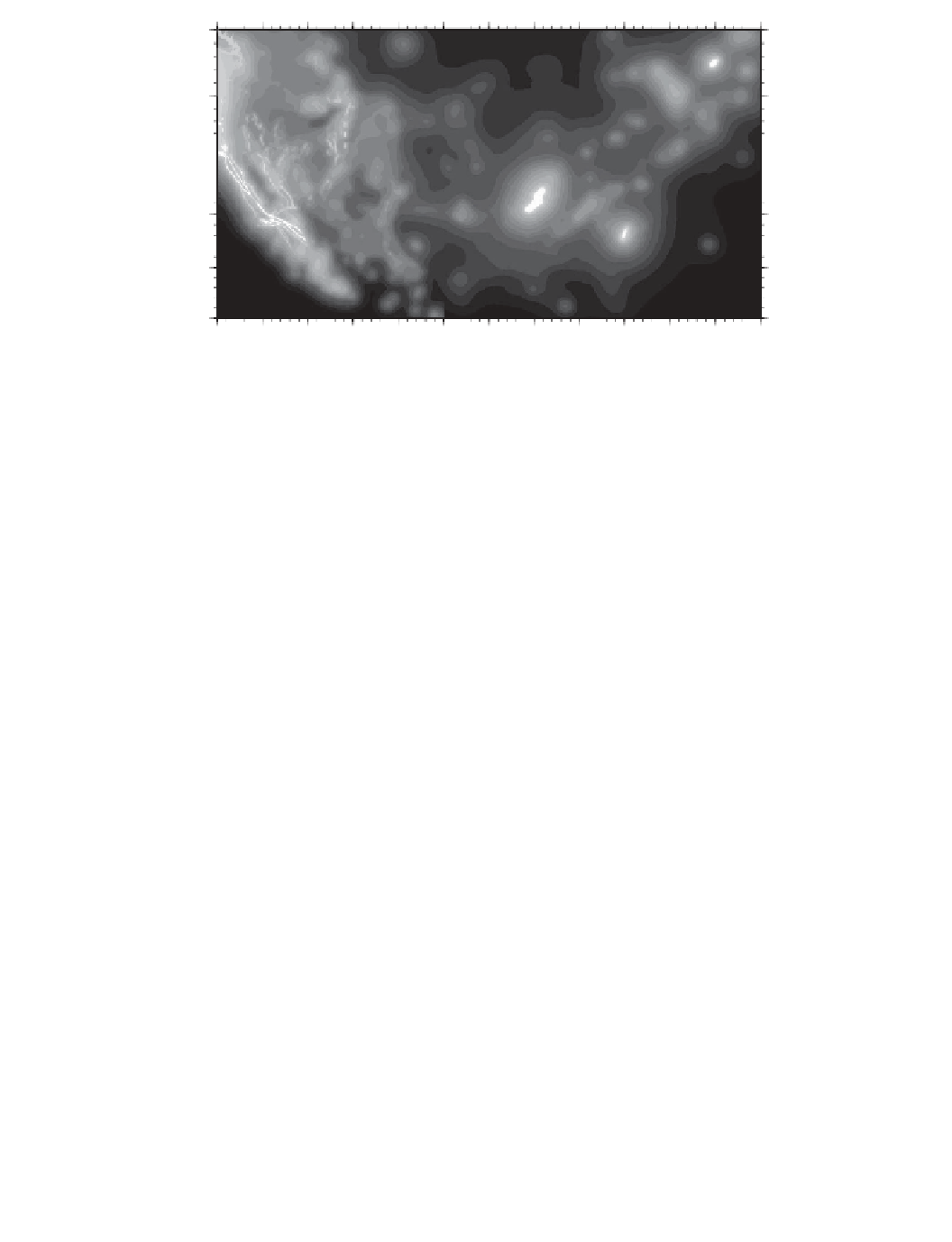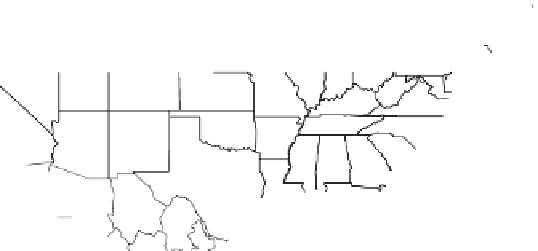Geoscience Reference
In-Depth Information
50˚
45˚
1.0
40˚
NMSZ
0.8
35˚
0.6
CHSZ
0.4
km
30˚
0.2
0
500
25˚
−125˚−120˚−115˚−110˚−105˚−100˚ −95˚ −90˚ −85˚ −80˚ −75˚ −70˚ −65˚
Figure 12.2 National Seismic Hazard Mapping Program seismic hazard map for the United States:
PGA (%g) with 2% probability of exceedence in 50 years, rock site (grayscale) (results from Petersen
moment release in the region has been concentrated in two source zones: the New Madrid,
Central United States, seismic zone (NMSZ) and the Charleston, South Carolina, seismic
zone (CHSZ) (
Figure 12.2
)
. Because of low regional attenuation (e.g., Nuttli,
1973a
)
, the
NMSZ)contributes significantly to seismic hazard in relatively distant, large midwestern
United States cities such as St. Louis, Missouri (Frankel
et al
.,
2002
;
Petersen
et al
.,
2008
)
.
I note that, in general, low attenuation will be a key factor contributing to seismic hazard
estimates in intraplate regions; the focus of this chapter, however, is on issues related to
source characterization. The CHSZ also contributes significantly to regional as well as
local hazard estimates. Away from the NMSZ and CHSZ, the likelihood of a large (M
7) earthquake is low, typically estimated by extrapolating background seismicity rates
assuming a Gutenberg-Richter distribution with an imposed M
max
.
Given the importance of the NMSZ and CHSZ for probabilistic seismic hazard analysis
(PSHA) in the CEUS, considerable effort has been devoted to understanding the large
earthquakes that occurred in both regions during historical times. Decades of painstaking
investigations have led to the development of detailed rupture scenarios for both the 1811-
1812NewMadrid earthquake sequence and the 1886 Charleston earthquake. For the NMSZ,
available data include (1) paleoliquefaction features preserved by the sediments within the
seismicity in the NMSZ, which has commonly been assumed to be a long-lived aftershock
reports”) of the shaking and/or damage caused by the events over the CEUS (e.g., Nuttli,
The 1811-1812 NewMadrid earthquake sequence comprised four principal earthquakes
that occured over 3 months. By some accounts the principal events in this sequence are


































































































































































































































